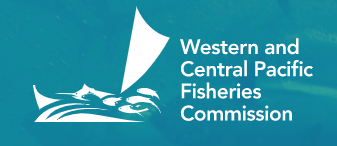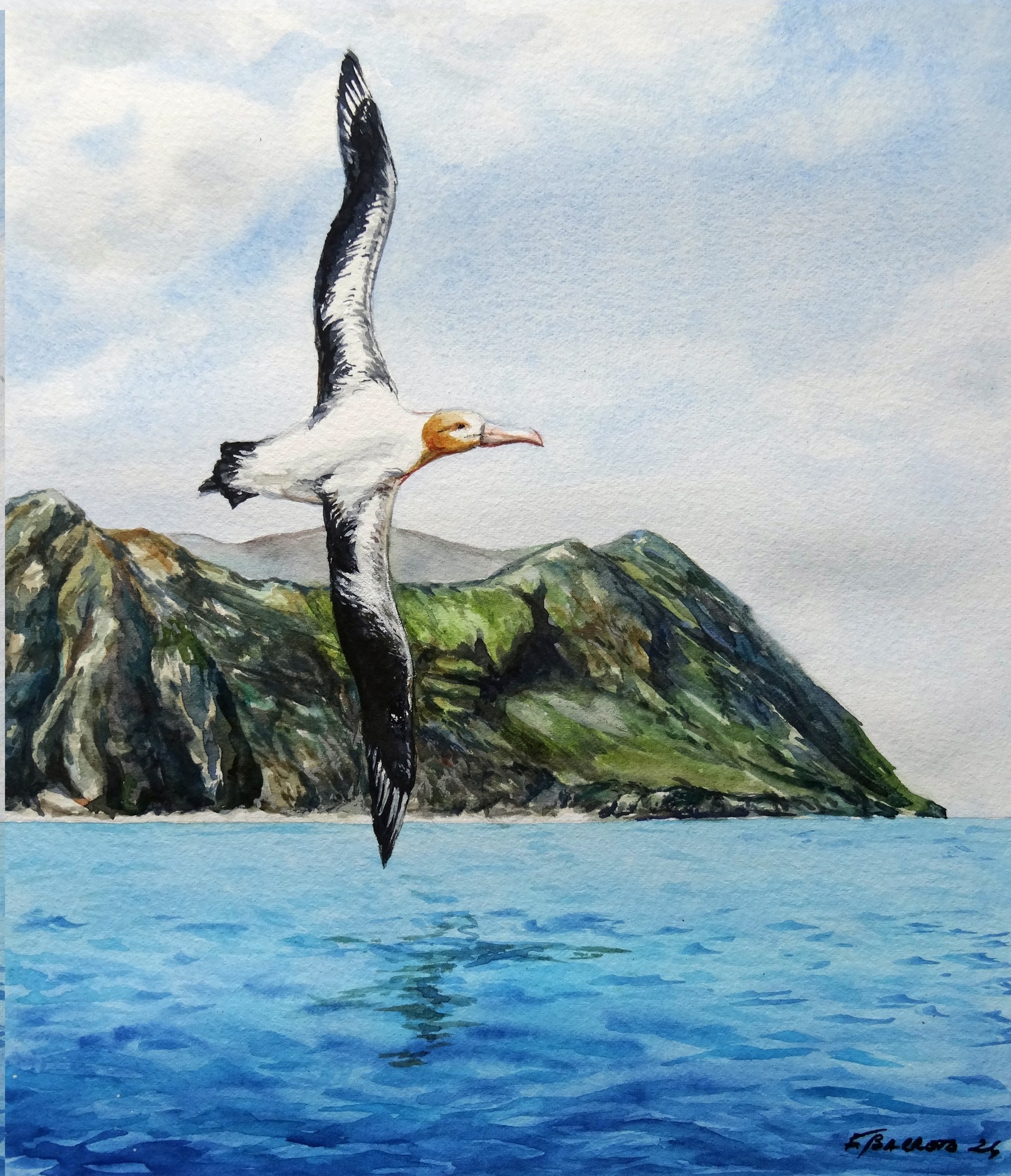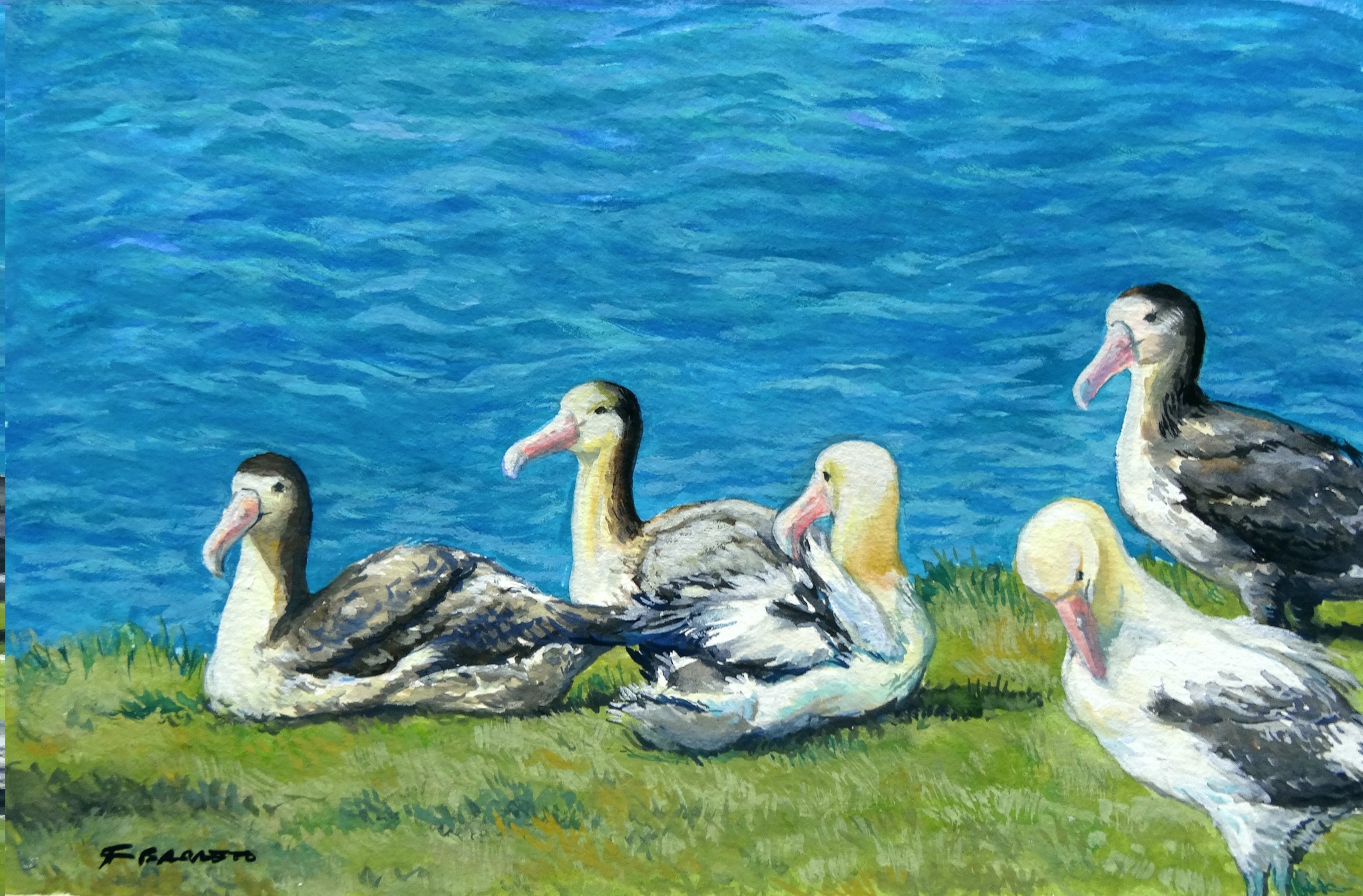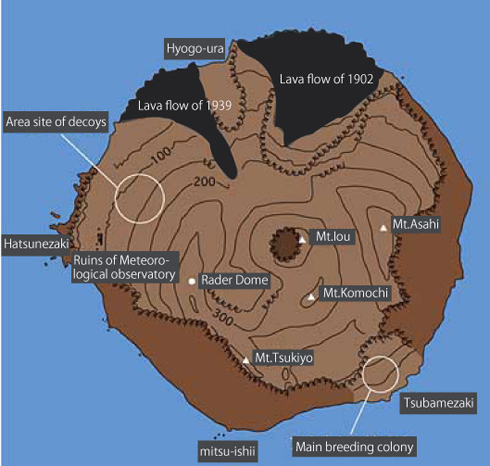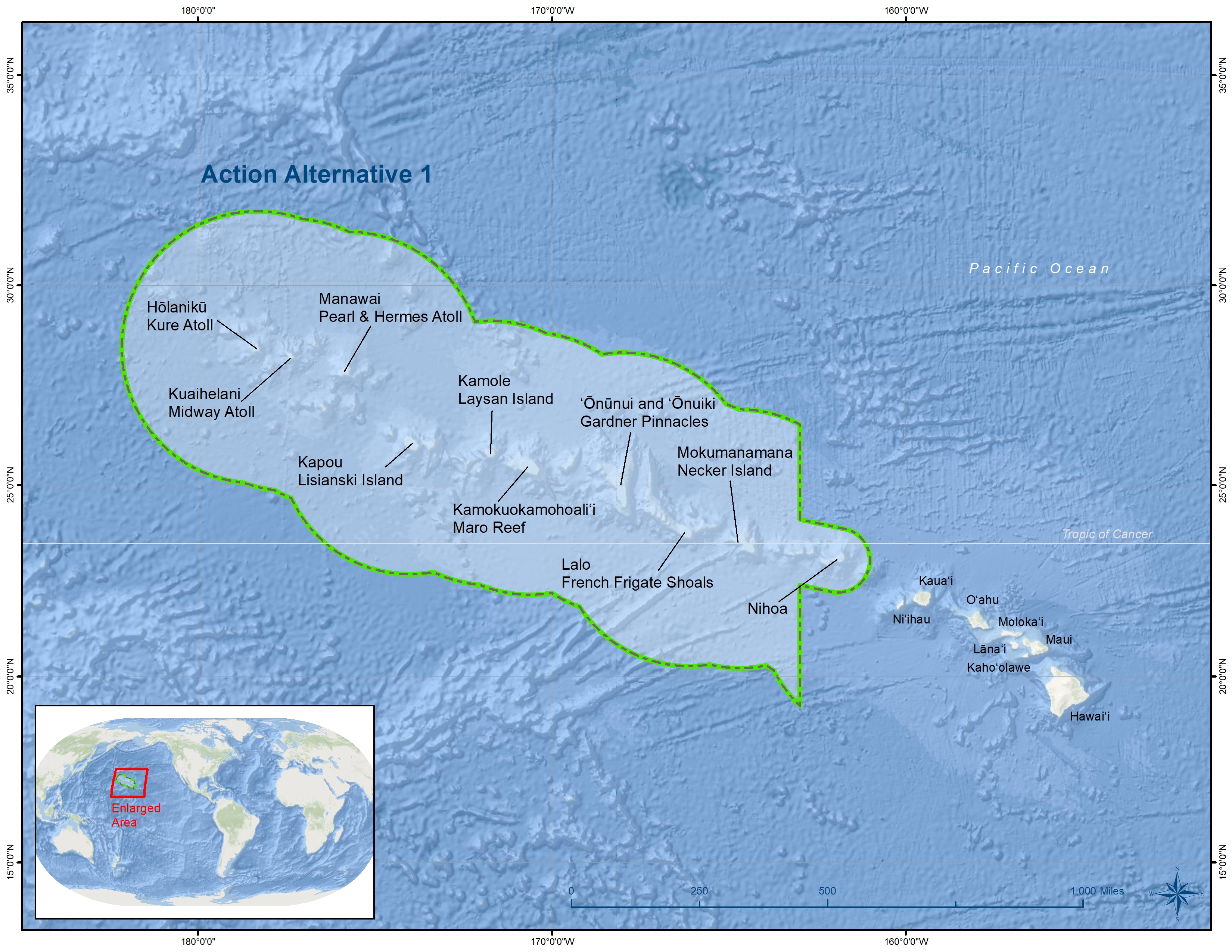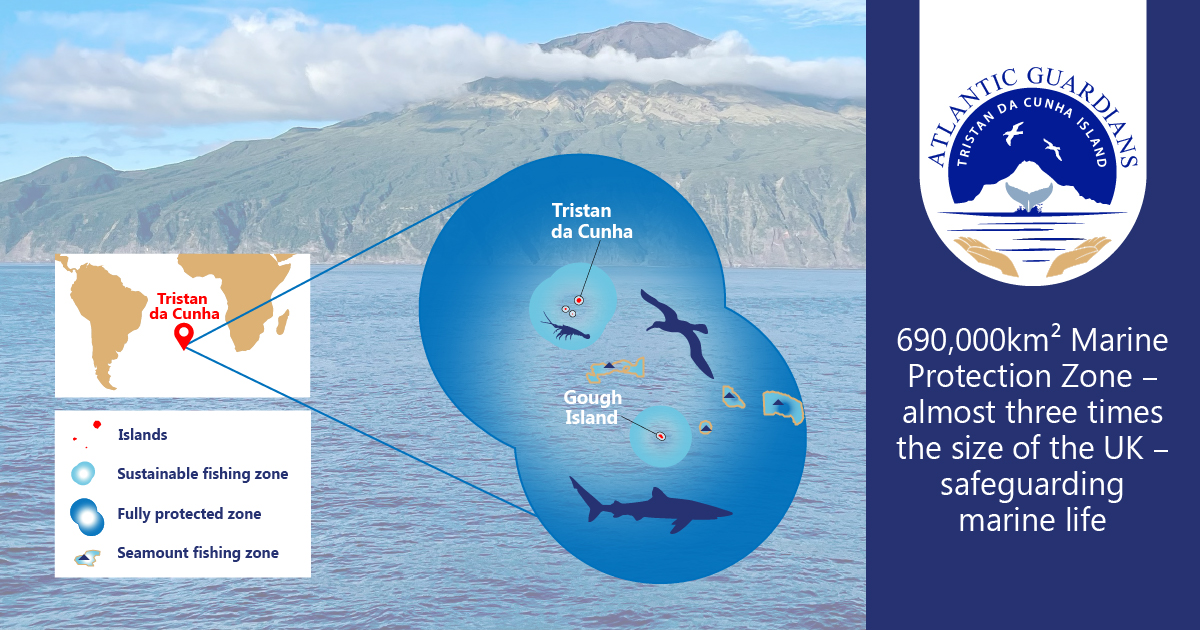
The Tristan Marine Protection Zone. Infographic from Atlantic Guardians
A 687 247-km² Marine Protection Zone (MPZ) around the UK’s Tristan da Cunha-Gough Islands in the South Atlantic that includes its entire Exclusive Economic Zone (EEZ) was promulgated in August 2021 (click here). The territorial waters and EEZ around the islands of Gough, Inaccessible, Nightingale (with its islets of Middle and Stoltenhoff) and Tristan that form the group support large breeding seabird populations, including of six ACAP-listed albatrosses and petrels, three of which are endemic to the island group.
On 17 April this year the Tristan MPZ received a gold Blue Park Award at the 9th Our Ocean Conference in recognition of exceptional marine biodiversity conservation (click here). An international council of marine conservation experts, assembled by the Marine Conservation Institute, selected this year’s Blue Park Award winners “using criteria based on the science of marine protected area effectiveness”. The MPZ joins “a growing network of 30 awarded Blue Parks around the global ocean that have met the highest science-based standards for conservation effectiveness”. To date, Blue Parks cover over 3.5 million square kilometres of ocean, spanning 23 countries.

A Critically Endangered and endemic Tristan Albatross
Diomedea dabbenena breeds on Inaccessible Island in 2012, photograph by Katrine Herian
“On behalf of all the community, we are delighted to receive this Blue Park Award in recognition of Tristan da Cunha’s Marine Protection Zone,” said Janine Lavarello, Tristan da Cunha's Marine Protection Zone Officer. “We are committed to maintaining these high standards to ensure Tristan’s waters are protected now, and for future generations. This Blue Park Award will raise the global profile of our Marine Protection Zone and island, giving us a platform to share our approaches to safeguarding our amazing wildlife and managing our Marine Stewardship Council-certified fishery.”
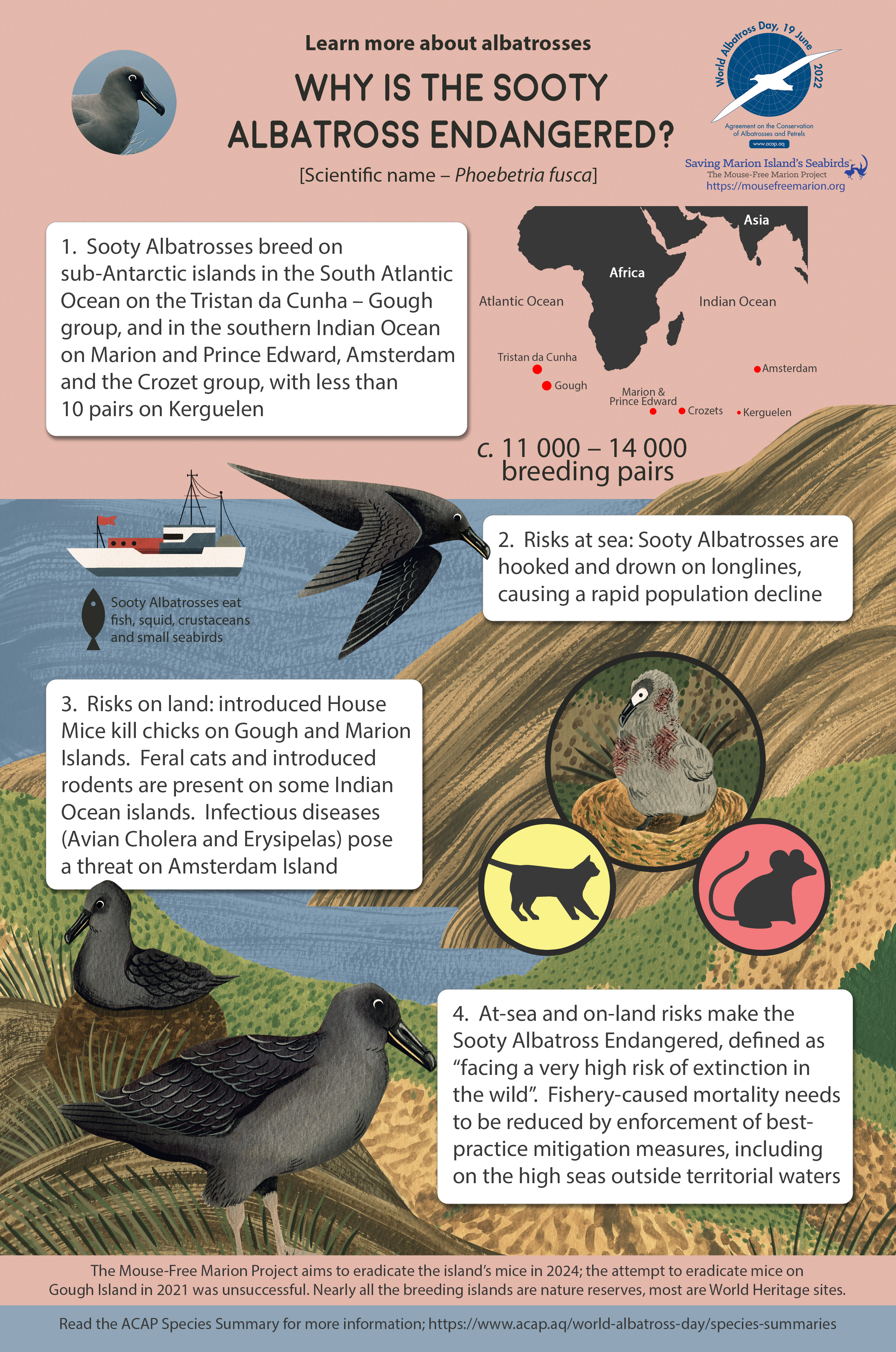
The Tristan-Gough Island Group is a stronghold for the Endangered Sooty Albatross Phoebetria fusca, download this ACAP Species Infographic from here
Tristan da Cunha is the second Blue Park awarded in a United Kingdom Overseas Territory, following the 850 000-square kilometre Pitcairn Islands MPA in 2023. Read more about the Tristan MPZ here.
This year ACAP has chosen the theme “Marine Protected Areas - Safeguarding our Oceans” for the fifth World Albatross Day in 2024, to be marked on 19 June.
John Cooper, Emeritus Information Officer, Agreement on the Conservation of Albatrosses and Petrels, 23 April 2024

 English
English  Français
Français  Español
Español 
